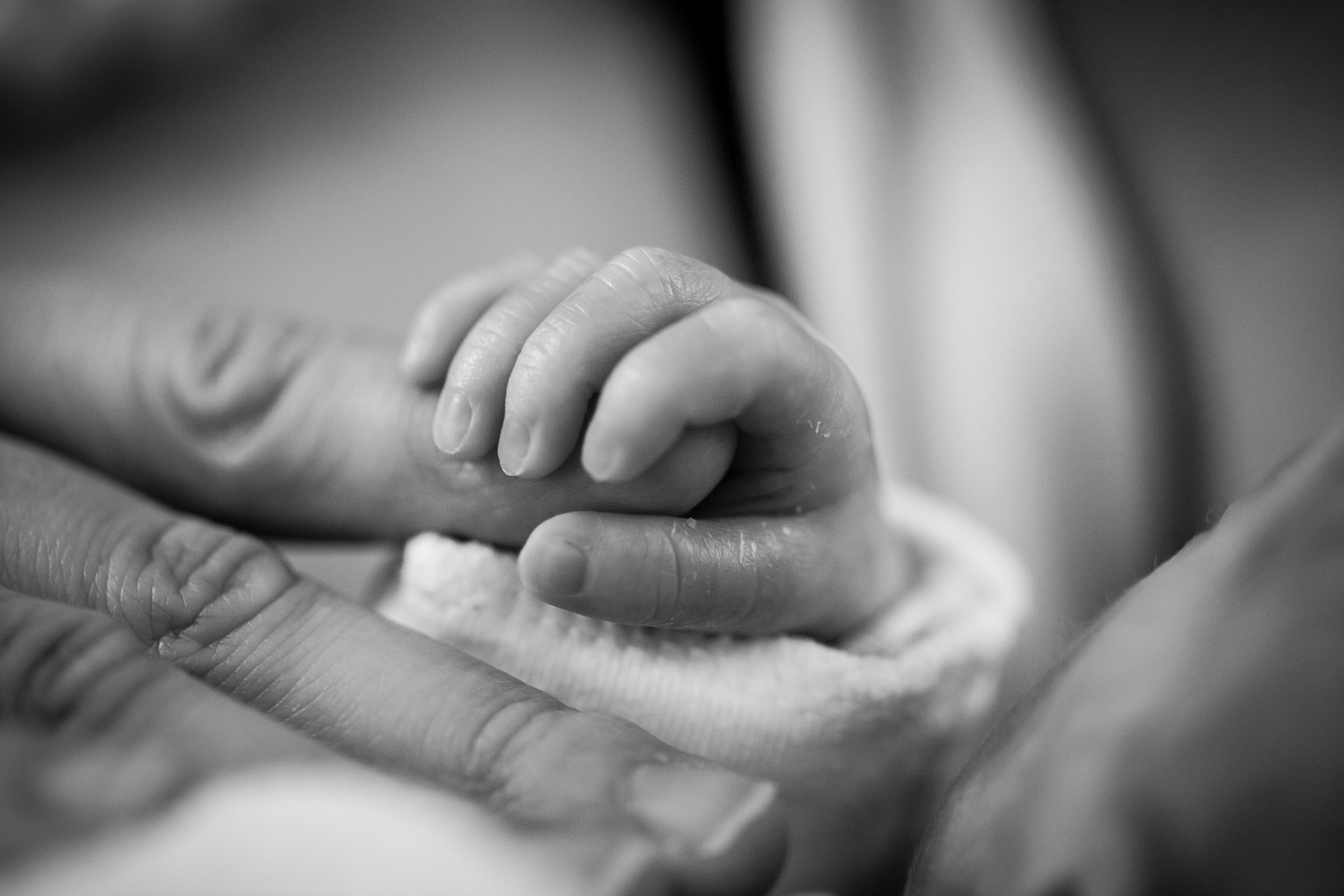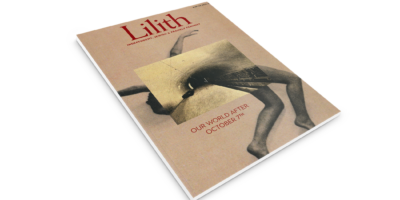
What I Learned As a Jewish Doula in North Carolina
Theory without application was vague and isolating. I also sensed I had spent little time with the spectrum of reproductive care involving childbirth and child rearing. Armed with only a stubborn belief that things had a way of working themselves out, I tumbled headfirst into the world of assisted birth.
*
UNC is both a university system and a series of increasingly unnavigable hospital corridors. Behind the academic facilities rises the enormous shadow of the medical complex, just a bus ride or short walk from campus. Having hundreds of doctors and access to world-class treatment is wholly convenient as a student—unless you’re trying to sleep in a dorm located beneath the flight path of a medical helicopter. The highly reputable medical school programs ensure a plethora of first year students spend most of their initial semester on campus loudly declaring their intention to become doctors (a dream often shattered once final grades are in). I never had such ambitions: I was a poor biology student, and an even worse chemist.
A requirement of my minor was the successful completion of a service-learning course. While there was a wide selection of taught classes that fit the bill, many of the most interesting opportunities asked for an application even to be considered. Just weeks before I was due to register for my senior classes, my eyes fell upon something entitled “Supporting the Childbearing Family.” I quickly scanned the description, which promised to train a small group of undergraduate and currently-enrolled nursing students to be doulas for UNC Hospital patients. I completed my application in a frenzy, typing quickly and scanning for errors as I went. The wait list was advertised as over seventy people deep, meaning my desire to step outside of my academic bubble would likely be ignored. My only hope was that my background was unusual enough that the instructor would consider me as a wildcard. As it happens, that idea proved correct.
Classes were held on Wednesday evenings the following fall in a solid three-hour time block, which meant sacrificing dinner to scribble notes relating to the stages of labor and how to best utilize a Pilates ball during the whole ordeal. We practiced hand massage techniques on each other, giggling, in the hopes that a client would ask for one (no client of mine ever did—and who could blame them, since they were in labor?). Sometimes, guest speakers came, and it was through this that I met people doing truly radical and empowering work in the birth community. I met full-spectrum doulas—people who attended abortions, miscarriages, and births—and stood in awe at the amount of personal strength and emotional stability necessary to carry others through some of the most vulnerable of life’s moments. I felt like a privileged outsider, peeking in at a world I had previously expected to encounter only when delivering a child of my own.
As would be expected, my first birth as an attending doula remains prominent in my memory. We were assigned clients early on in the semester, with the expectation that their delivery would happen after we’d had a few months’ of instruction under our belts. Instead, my client began her surprise induction during my twenty-first birthday party, leaving me scrambling to coordinate my arrival time at the hospital while balancing the obligatory drinks that had found their way into my hands. Fortunately, she told me not to come until the following evening, as she was progressing far slower than expected. I was relieved, but still inwardly furious with myself for having the audacity to have a birthday so close to her due date.
When I arrived the following evening, dressed in a purple shirt emblazoned with the words birth partner, I was counting down the seconds until I was found out to be a fraud. In a fit of nervousness, I’d assured my client at our first meeting that I had been to a live birth before. I’d certainly seen births—the internet is a widely useful tool—but I was fully aware that being in the room was far different than looking through a screen. In the end, I panicked and lied, and figured that I had experienced moderate-to-full success in bluffing my way through nerve-wracking scenarios previously. All of this raced through my mind in the elevator up to the maternity floor.
In the end, of course, it was both nothing like what I expected and somehow exactly like I had pictured. The time passed in slow drips, and then all at once. My client wanted nothing to do with some of my pre-packaged skills and suggestions, and yet we found a language and rhythm that worked for us. She hated the idea of bouncing on a Pilates ball, but we walked the length of the maternity ward a few dozen times, arms clasped, making conversation in hushed tones punctuated by her gasps.
Sometime after midnight, with the lights turned down low, my client shifted in her hospital bed, her hands gripping at the plastic sides as she caught my eye. “You know what name I’ve picked out?” she asked, and I shook my head. “It’s Rebecca. It’s a strong name. It’s biblical.” I nodded in agreement. “It’s Jewish,” she continued, “I’m not Jewish—but I liked it. It has meaning. Do you know what Rebecca means?” I smiled wryly. “Friend?” I was certain I was correct, though I didn’t tell her why that might be. “No! That’s Ruth,” she said, laughing, even as she wrinkled her nose from the pain of a contraction dulled by anesthetic. “I thought about Ruth. I thought it might be too Jewish. People might think we’re Jewish.” I knew she didn’t mean anything by the comment—only that she didn’t want her own faith misrepresented. Still, as I watched her slowly lean herself back to the other side of the bed, I thought grimly, what on Earth is wrong with being mistaken for being Jewish? Of course, I knew the answer. A few moments passed in silence. I broke the quiet—“Rebecca was somebody’s mother in the Bible, right?” I heard a muffled reply, and then a clearer response when she pulled the blanket from over her mouth—“Joined. It means joined. Like, together. I thought that was nice.” I told her I agreed, and we did a crossword puzzle for a while until labor overrode the medicine dripping into her back. When she arrived, many hours later, Rebecca was a ruddy pink—all tears and mucus and blood. She was, undoubtedly, the most beautiful thing I’d ever seen. I fleetingly caught myself thinking that though she’d never know it—she and I were joined. I was there when she entered the world, and that bond isn’t easily broken.
*
Since moving back home, I find myself, more often than not, pining for the rosy hours early of the early morning when everything was bright and new. If you’d asked me at the time, stumbling out of the hospital at 7 am to attend an 8 am class, I would’ve told you otherwise, but such is the beauty of looking in retrospect. Heralding life into the world, before slipping back under my duvet and back into my role as humanities student, was a juxtaposition of thrilling difference.
There is much I am happy to have left behind—the late nights, stalled labors, and the phrase “incompetent cervix” tossed around as common parlance by nurses and doctors alike are a few that spring to mind. What remains (and what I miss) are the patient interactions. They were sometimes better, sometimes far worse than my first client. They were, however, never boring. I learned more about the value of listening amongst chaotic, loud deliveries complete with bullheaded physicians and glaring overhead surgical lights than I ever did in a classroom. I love all of the children I was fortunate enough to witness born. Most, if not all, will have no idea I was present at the moment they tumbled headfirst into our world. I frequently fantasize about running into them, somehow, someway, many years from now. Neither party would know, of course. But for a brief moment, I imagine, something would click into place amongst the wider gears of the universe.
The views and opinions expressed in this article are the author’s own and do not necessarily reflect those of Lilith Magazine.



